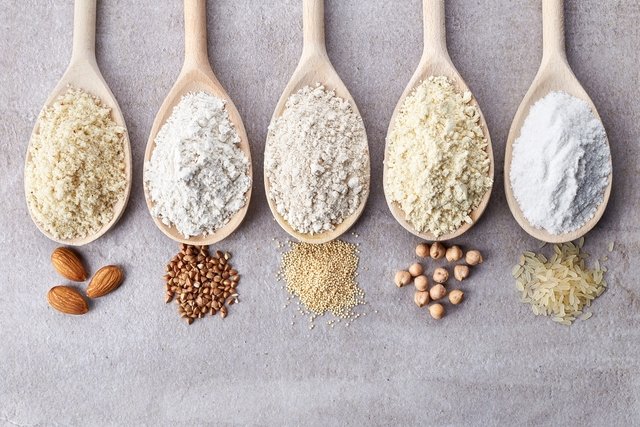The celiac disease diet should be completely free of gluten, which is why it is essential to avoiding eating foods with wheat, rye, barley, malt, spelt and triticale.
When following a celiac disease diet, it is important to avoid eating foods that may be contaminated with glutent, like oats, soy sauce and sausages. You should carefully assess food packaging to determine whether it explicitly states "contains gluten" or "gluten-free."
People with celiac disease should follow a gluten-free diet, as these foods can damage the intestines and worsen symptoms like diarrhea, bloating and abdominal pain.

Food to avoid
Food that should be eliminated completely from a celiac disease diet include:
- Flour, wheat germ, wheat bran
- Barley
- Rye
- Triticale
- Malt
- Spelt
- Semola
- Khorasan
- Doughs and sweets made with flour: bread, cookies, cake, croutons, crackers, biscuits, pizza, pasta and lasagna
- Alcohol drinks: beer, whiskey, vodka, gin and ginger ale
- Other drinks: ovaltine, drinks with malt, coffee mixed with barley, chocolate mixes
- Cereal made with flour, porridges
These foods should be completely eliminated from the diet, as they can cause or worsen symptoms of celiac disease. Learn more about symptoms of a gluten intolerance and how they can present.
Food contaminated with gluten
Some foods may not contain gluten in their composition, however they can enter in contact with gluten when being manufactured or produced, leading to contamination. These foods should also be avoided by patients with celiac disease, as they can worsen symptoms.
Some foods that may be contaminated with gluten include oats, processed cheeses, instant soups, ready-made meat balls, frozen French fries, soy sauce, salad dressings, seasoning powder and cubes, ketchup, mustard, juice mixes, vegetarian hamburgers, sausages and nut mixes.
Some of these foods may be carefully packaged and not contain any gluten, however. Therefore, it is important to carefully read food packaging to determine the risk for gluten contamination.
What to eat
When adhering to a celiac disease diet, you should incorporate the following foods to your daily routine:
- Fruit in general, like bananas, apples, papaya, pears, oranges, watermelon and guava
- Vegetables and leafy greens, like lettuce, tomato, cucumber, okra, and eggplant
- Legumes, like beans, chickpeas, soybeans and lentils
- Gluten-free grains, like rice, quinoa, corn, amaranth and buckwheat
- Fats and seeds, like olive oil, sunflower seeds, pumpkin seeds and flaxseeds
- Protein, like chicken, fish, eggs, tofu and beef
- Nuts, like Brazilian nuts, cashews, almonds and walnuts
- Dairy, like milk, cheese, yogurt and butter
- Tubercles, like potatoes, sweet potatoes, yams, and mandioca
It is possible to access several diverse, celiac-appropriate foods at the supermarket or at natural health stores. Most recently, there are breads and pastas that are gluten-free and safe for consumption. Check out a list of other gluten-free foods that you can incorporate into your diet.
Celiac diet meal plan
The following table outlines a 3-day meal plan for a celiac disease diet:
Patients with celiac disease should consult a registered dietitian so that a meal plan that meets each person’s individual needs is developed. The dietitian may identify a need for further supplementation with vitamins and minerals, as celiac disease is often associated with poor nutrient absorption.
Considerations at home
In addition to avoid food with gluten, it is also important to take certain considerations to prevent contamination. You should avoid using the same utensils and equipment (like pots, cutlery, blender and toasters) to prepare foods with and without gluten.
It is also advised to avoid storing foods with and without gluten in the same places. You should take time to thoroughly wipe down spaces that are used to prepare gluten-free foods.
Considerations out of the home
People with celiac disease should have extra caution when eating outside of the home. It is important to inform restaurant staff of your celiac disease and to ask about the ingredients used to prepare meals.
You can look for restaurants that are totally gluten-free, as many restaurant kitchens will use the same space and equipment to prepare foods with or without gluten.
When eating a friend’s house, you should avoid using the same plates, cutlery and cups that are used to serve foods with gluten. Ideally, you should wash these pieces with a new sponge.
